QUIPU GUT – CECILIA VICUÑA’S INSTALLATION AT PAMM
Cecilia Vicuña's Quipu Gut is a large hanging sculpture of unspun wool dyed entirely red, made in 2017 and inspired by the ancient quipu system, that arrived at the Pérez Art Museum in Miami.
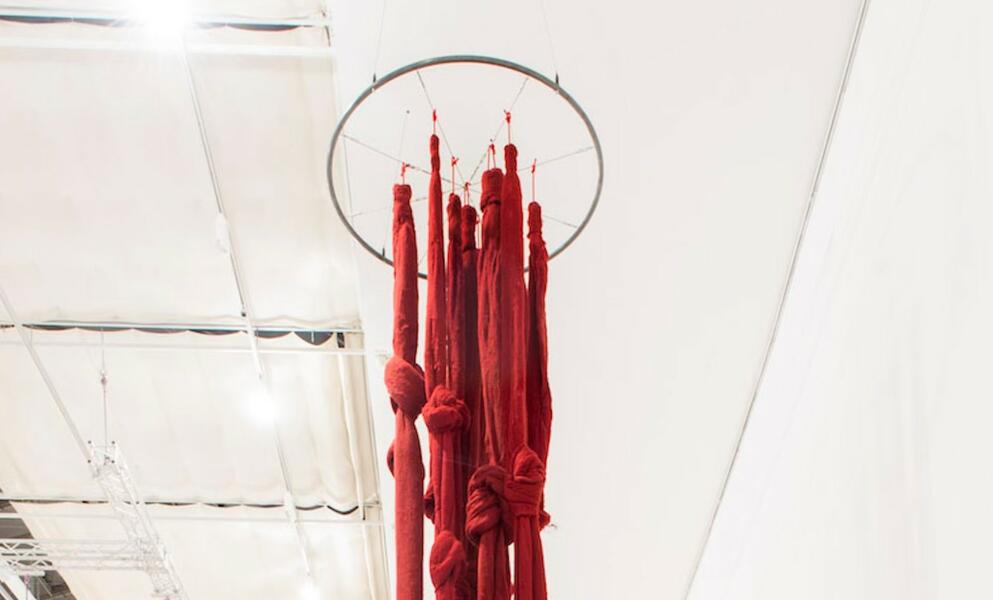
Quipu Gut is part of a larger family of red quipu structures the artist has created since Quipu Menstrual in 2006; the color is meant to associate the works with the “blood of the glaciers” destroyed by mining. The red quipus also ruminate on water, blood, and womanhood manifested as poetic strands and energy flows. Quipu Gut (2017), is one of two quipus commissioned for documenta 14; it was shown at documenta Halle in Kassel, Germany; Quipu Womb (2017), the second commissioned work, was shown at the National Museum of Contemporary Art in Athens. Both were created “in honor of a syncretic religious tradition that—via the umbilical cord of menstrual symbolism—connects Andean mother goddesses with the maritime mythologies of ancient Greece. Mythology is spiritually manifest in Vicuña’s self-described “poem in space,” constructed out of fifty large strands of unspun wool, dyed red and knotted rhythmically along its almost thirty-three-foot length, bridging shared histories, Indigenous weaving practices, ritual, and environmental activism.
Cecilia Vicuña is a poet and artist who grew up in the Chilean commune of La Florida, in the Maipo Valley. Born to a family of artists and intellectuals, Vicuña grew up hearing about the persecution and incarceration of individuals who struggled for social justice in the wake of increasingly conservative government agendas. While attending the Slade School of Fine Art in London on a British Council Award in 1972–73, a coup d’état led by General Augusto Pinochet, commander-in-chief of the Chilean army, ushered in a seventeen-year military dic1tatorship. This led Vicuña to remain in London on a self-imposed exile, where she exhibited her work at the Institute of Contemporary Arts and published her first book, Saborami (1973). At the time, she was largely focused on political activism directed against fascism and human rights violations in Chile and other countries.
-
Cecilia Vicuña. "Quipu Gut" (Tripa de quipu), 2017, lana teñida y sin hilar. Vista de instalación: documenta 14, documenta Halle, Kassel, 10 de junio - 17 de septiembre de 2017. © 2024 Cecilia Vicuña / Artists Rights Society (ARS), Nueva York. Cortesía del artista, Pérez Art Museum Miami y Lehmann Maupin, Nueva York, Seúl y Londres. Foto: Feodora Pallas.
-
Cecilia Vicuña. "Quipu Gut" (Tripa de quipu), 2017, lana teñida y sin hilar. Vista de instalación: documenta 14, documenta Halle, Kassel, 10 de junio - 17 de septiembre de 2017. © 2024 Cecilia Vicuña / Artists Rights Society (ARS), Nueva York. Cortesía del artista, Pérez Art Museum Miami y Lehmann Maupin, Nueva York, Seúl y Londres. Foto: Feodora Pallas.
In 1975, she returned to South America to live in Bogotá, Colombia, where she embarked on a path of creative rediscovery focused on Indigenous art and culture. Vicuña’s interest in the quipu (“knot” in Quechua) was reignited at this time and has remained a constant source of inspiration. A quipu is an ancient Andean communication technology that uses knotted strings to record information, a practice that was banned by the Spanish during the colonization of South America. In 1965, Vicuña first referenced the quipu in her journal in the phrase, el quipu que no recuerda nada (“the quipu that doesn’t remember anything”). Knowledge, wisdom, and memory are embedded in her creative and poetic conception of the quipu, inspiring subsequent iterations and manifestations of this ancient communication device.
Related Topics
May interest you

Rolf Art presented Marcelo Brodsky's exhibition MARTIRIO, in collaboration with artists Fernando Bryce, Martín Kovensky and Fredi Casco; supported by a research and conceptual approach by José Emilio Burucúa and Carles Guerra.

Rolf Art presented Marcelo Brodsky's exhibition MARTIRIO, in collaboration with artists Fernando Bryce, Martín Kovensky and Fredi Casco; supported by a research and conceptual approach by José Emilio Burucúa and Carles Guerra.
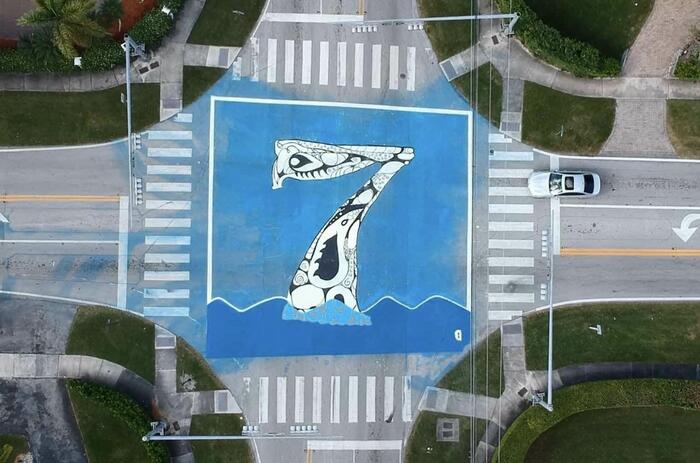
Cultural Programs of the National Academy of Sciences announces Xavier Cortada: Climate Science Art a solo exhibition at Washington, D.C. featuring Miami-based artist Xavier Cortada's climate change-focused artwork from Miami-Dade County, Florida, and the North and South Poles, spanning from 2007 to the present.
XAVIER CORTADA: CLIMATE SCIENCE ART
Cultural Programs of the National Academy of Sciences announces Xavier Cortada: Climate Science Art a solo exhibition at Washington, D.C. featuring Miami-based artist Xavier Cortada's climate change-focused artwork from Miami-Dade County, Florida, and the North and South Poles, spanning from 2007 to the present.
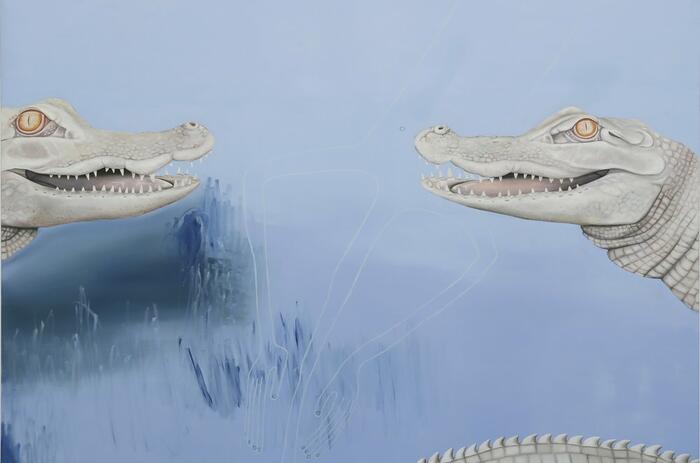
All sauce, No shrimp is Sophie Ullrich’s anticipated solo exhibition at Piero Atchugarry. The artist presented a new collection of site-specific paintings and sculptures that entwines modern folklore and scientific inquiry.
AN UNDERWATER KINGDOM – SOPHIE ULLRICH EN PIERO ATCHUGARRY
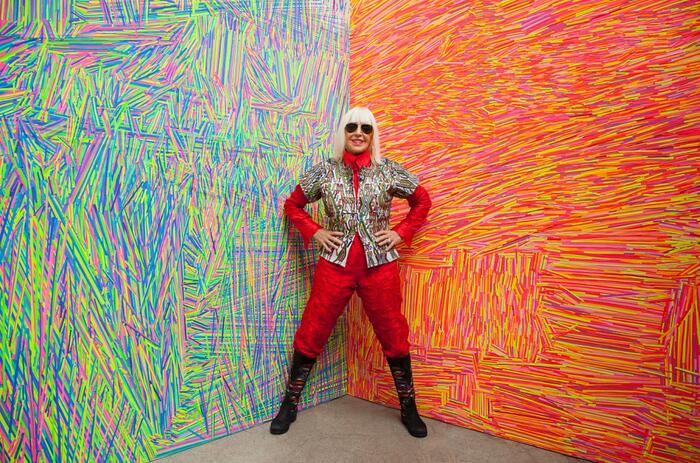
Intensity Life is Marta Minujín’s first retrospective exhibition in Europe, to be held at the Copenhagen Contemporary Museum.
MARTA MINUJIN’S FIRST RETROSPECTIVE EXHIBITION IN EUROPE
Intensity Life is Marta Minujín’s first retrospective exhibition in Europe, to be held at the Copenhagen Contemporary Museum.

In April 2022, my family suggested we attend the opening of an exhibition by Marisol Escobar, a French-Venezuelan artist whose name was vaguely familiar to me. I wasn’t particularly excited, but wanting to spend time with them, I agreed to go. Little did I know that this visit would leave an incredible mark on me.
ONCE WARHOL’S MUSE, NOW FORGOTTEN IN TIME: MARISOL ESCOBAR
In April 2022, my family suggested we attend the opening of an exhibition by Marisol Escobar, a French-Venezuelan artist whose name was vaguely familiar to me. I wasn’t particularly excited, but wanting to spend time with them, I agreed to go. Little did I know that this visit would leave an incredible mark on me.
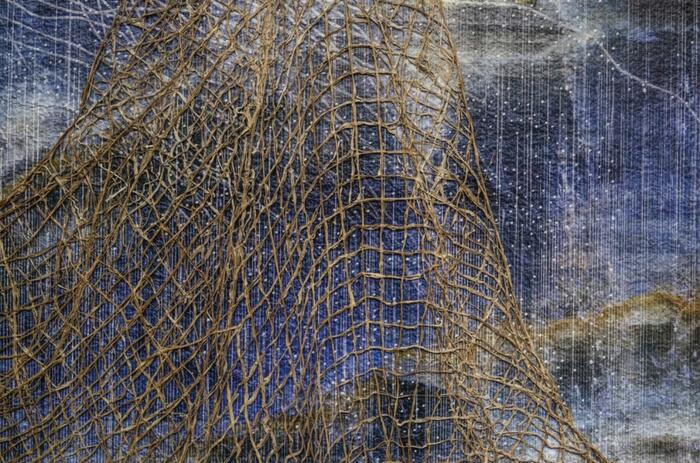
Lehmann Maupin presented Astral Sea, an exhibition of new work by New York-based artist Teresita Fernández. Featuring a series of glazed ceramic pieces and new sculptural paper panels, Astral Sea extends the artist’s interests in the confluence points of the cosmos, land, and water, as seen through the lens of an embodied sculptural landscape.
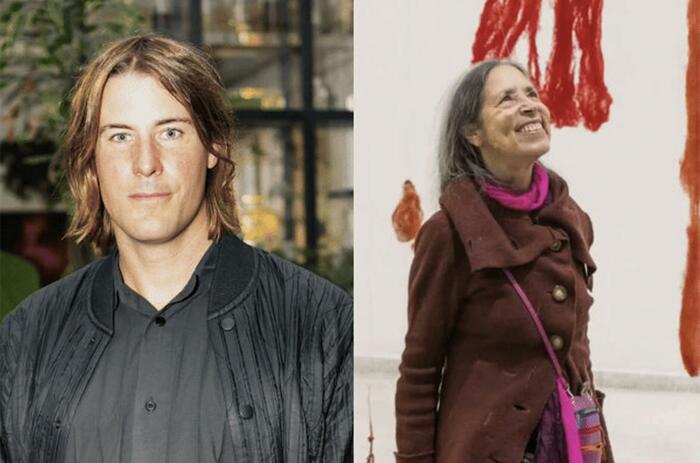
The Museum of Contemporary Art (MOCA) announced two winners of the inaugural Eric and Wendy Schmidt Environment and Art Prize: Julian Charrière (b. 1987 in Morges, Switzerland; lives and works in Berlin, Germany) and Cecilia Vicuña (b. 1948 in Santiago, Chile; lives and works in New York, NY and Santiago, Chile). Each artist will receive 100,000 USD and institutional support from MOCA to develop a commissioned project addressing the critical intersections of art, climate change, and environmental justice.
CECILIA VICUÑA & JULIAN CHARRIÈRE: INAUGURAL ERIC AND WENDY SCHMIDT ENVIRONMENT AND ART PRIZE
The Museum of Contemporary Art (MOCA) announced two winners of the inaugural Eric and Wendy Schmidt Environment and Art Prize: Julian Charrière (b. 1987 in Morges, Switzerland; lives and works in Berlin, Germany) and Cecilia Vicuña (b. 1948 in Santiago, Chile; lives and works in New York, NY and Santiago, Chile). Each artist will receive 100,000 USD and institutional support from MOCA to develop a commissioned project addressing the critical intersections of art, climate change, and environmental justice.

Locust Projects presents Bare Tool (Herramienta desnuda), a new exhibition by artist Alexandre Arrechea that explores the action of a stone skipping across water as a metaphor for “social sculpture” and the resulting ripple effect, which the artist envisions in three acts: “The Tool,” “The Action,” and “The Implications,” unfolding as a large scale, immersive multimedia experience that invites reflection on the power of individual acts.
ALEXANDRE ARRECHEA’S “BARE TOOL” AT LOCUST PROJECTS
Locust Projects presents Bare Tool (Herramienta desnuda), a new exhibition by artist Alexandre Arrechea that explores the action of a stone skipping across water as a metaphor for “social sculpture” and the resulting ripple effect, which the artist envisions in three acts: “The Tool,” “The Action,” and “The Implications,” unfolding as a large scale, immersive multimedia experience that invites reflection on the power of individual acts.
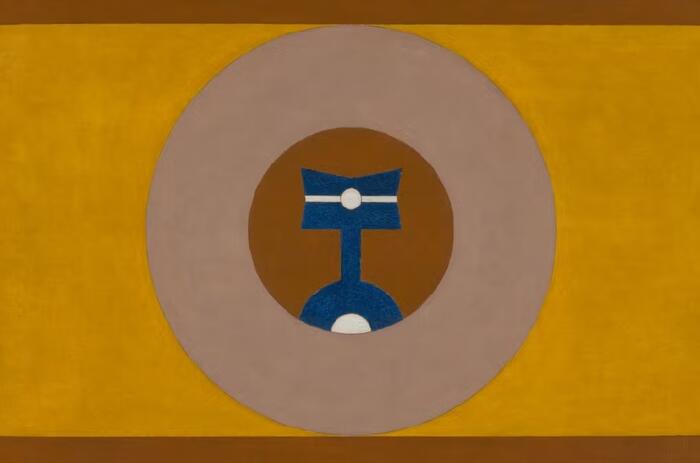
ICA Miami presents the first US museum exhibition of the late Afro-Brazilian painter Rubem Valentim (b. 1922, Salvador, Brazil; d. 1991, São Paulo). A singular voice in modernist painting and geometric abstraction, Valentim explored the medium’s formal concerns and social resonances across cultures and spiritual practices. This exhibition focuses on works Valentim produced in the 1960s, and the transformation of his work and thinking during this time.
RUBEM VALENTIM AT ICA MIAMI: THINKING AND TRANSFORMATION
ICA Miami presents the first US museum exhibition of the late Afro-Brazilian painter Rubem Valentim (b. 1922, Salvador, Brazil; d. 1991, São Paulo). A singular voice in modernist painting and geometric abstraction, Valentim explored the medium’s formal concerns and social resonances across cultures and spiritual practices. This exhibition focuses on works Valentim produced in the 1960s, and the transformation of his work and thinking during this time.

The Bass is presenting the exhibition asume vivid astro focus – XI, an enveloping installation of patterned wallpaper and decal graphics that spans floor to ceiling in a setting created for works by more than thirty artists. On view from November 13, 2024.
AVAF IN MIAMI – AN INSTALLATION AT THE BASS
The Bass is presenting the exhibition asume vivid astro focus – XI, an enveloping installation of patterned wallpaper and decal graphics that spans floor to ceiling in a setting created for works by more than thirty artists. On view from November 13, 2024.

Inspired by the murals of Carl Abrahams lining the departures lounge of Kingston Jamaica’s Norman Manley International Airport, Hurvin Anderson presents a new, sixteen-panel, monumental painting in his first solo show at Pérez Art Museum Miami.
HURVIN ANDERSON’S LANDSCAPES AT PAMM
Inspired by the murals of Carl Abrahams lining the departures lounge of Kingston Jamaica’s Norman Manley International Airport, Hurvin Anderson presents a new, sixteen-panel, monumental painting in his first solo show at Pérez Art Museum Miami.

Rolf Art presented Marcelo Brodsky's exhibition MARTIRIO, in collaboration with artists Fernando Bryce, Martín Kovensky and Fredi Casco; supported by a research and conceptual approach by José Emilio Burucúa and Carles Guerra.

Cultural Programs of the National Academy of Sciences announces Xavier Cortada: Climate Science Art a solo exhibition at Washington, D.C. featuring Miami-based artist Xavier Cortada's climate change-focused artwork from Miami-Dade County, Florida, and the North and South Poles, spanning from 2007 to the present.
XAVIER CORTADA: CLIMATE SCIENCE ART
Cultural Programs of the National Academy of Sciences announces Xavier Cortada: Climate Science Art a solo exhibition at Washington, D.C. featuring Miami-based artist Xavier Cortada's climate change-focused artwork from Miami-Dade County, Florida, and the North and South Poles, spanning from 2007 to the present.

All sauce, No shrimp is Sophie Ullrich’s anticipated solo exhibition at Piero Atchugarry. The artist presented a new collection of site-specific paintings and sculptures that entwines modern folklore and scientific inquiry.
AN UNDERWATER KINGDOM – SOPHIE ULLRICH EN PIERO ATCHUGARRY

Intensity Life is Marta Minujín’s first retrospective exhibition in Europe, to be held at the Copenhagen Contemporary Museum.
MARTA MINUJIN’S FIRST RETROSPECTIVE EXHIBITION IN EUROPE
Intensity Life is Marta Minujín’s first retrospective exhibition in Europe, to be held at the Copenhagen Contemporary Museum.

In April 2022, my family suggested we attend the opening of an exhibition by Marisol Escobar, a French-Venezuelan artist whose name was vaguely familiar to me. I wasn’t particularly excited, but wanting to spend time with them, I agreed to go. Little did I know that this visit would leave an incredible mark on me.
ONCE WARHOL’S MUSE, NOW FORGOTTEN IN TIME: MARISOL ESCOBAR
In April 2022, my family suggested we attend the opening of an exhibition by Marisol Escobar, a French-Venezuelan artist whose name was vaguely familiar to me. I wasn’t particularly excited, but wanting to spend time with them, I agreed to go. Little did I know that this visit would leave an incredible mark on me.

Lehmann Maupin presented Astral Sea, an exhibition of new work by New York-based artist Teresita Fernández. Featuring a series of glazed ceramic pieces and new sculptural paper panels, Astral Sea extends the artist’s interests in the confluence points of the cosmos, land, and water, as seen through the lens of an embodied sculptural landscape.

The Museum of Contemporary Art (MOCA) announced two winners of the inaugural Eric and Wendy Schmidt Environment and Art Prize: Julian Charrière (b. 1987 in Morges, Switzerland; lives and works in Berlin, Germany) and Cecilia Vicuña (b. 1948 in Santiago, Chile; lives and works in New York, NY and Santiago, Chile). Each artist will receive 100,000 USD and institutional support from MOCA to develop a commissioned project addressing the critical intersections of art, climate change, and environmental justice.
CECILIA VICUÑA & JULIAN CHARRIÈRE: INAUGURAL ERIC AND WENDY SCHMIDT ENVIRONMENT AND ART PRIZE
The Museum of Contemporary Art (MOCA) announced two winners of the inaugural Eric and Wendy Schmidt Environment and Art Prize: Julian Charrière (b. 1987 in Morges, Switzerland; lives and works in Berlin, Germany) and Cecilia Vicuña (b. 1948 in Santiago, Chile; lives and works in New York, NY and Santiago, Chile). Each artist will receive 100,000 USD and institutional support from MOCA to develop a commissioned project addressing the critical intersections of art, climate change, and environmental justice.

Locust Projects presents Bare Tool (Herramienta desnuda), a new exhibition by artist Alexandre Arrechea that explores the action of a stone skipping across water as a metaphor for “social sculpture” and the resulting ripple effect, which the artist envisions in three acts: “The Tool,” “The Action,” and “The Implications,” unfolding as a large scale, immersive multimedia experience that invites reflection on the power of individual acts.
ALEXANDRE ARRECHEA’S “BARE TOOL” AT LOCUST PROJECTS
Locust Projects presents Bare Tool (Herramienta desnuda), a new exhibition by artist Alexandre Arrechea that explores the action of a stone skipping across water as a metaphor for “social sculpture” and the resulting ripple effect, which the artist envisions in three acts: “The Tool,” “The Action,” and “The Implications,” unfolding as a large scale, immersive multimedia experience that invites reflection on the power of individual acts.

ICA Miami presents the first US museum exhibition of the late Afro-Brazilian painter Rubem Valentim (b. 1922, Salvador, Brazil; d. 1991, São Paulo). A singular voice in modernist painting and geometric abstraction, Valentim explored the medium’s formal concerns and social resonances across cultures and spiritual practices. This exhibition focuses on works Valentim produced in the 1960s, and the transformation of his work and thinking during this time.
RUBEM VALENTIM AT ICA MIAMI: THINKING AND TRANSFORMATION
ICA Miami presents the first US museum exhibition of the late Afro-Brazilian painter Rubem Valentim (b. 1922, Salvador, Brazil; d. 1991, São Paulo). A singular voice in modernist painting and geometric abstraction, Valentim explored the medium’s formal concerns and social resonances across cultures and spiritual practices. This exhibition focuses on works Valentim produced in the 1960s, and the transformation of his work and thinking during this time.

The Bass is presenting the exhibition asume vivid astro focus – XI, an enveloping installation of patterned wallpaper and decal graphics that spans floor to ceiling in a setting created for works by more than thirty artists. On view from November 13, 2024.
AVAF IN MIAMI – AN INSTALLATION AT THE BASS
The Bass is presenting the exhibition asume vivid astro focus – XI, an enveloping installation of patterned wallpaper and decal graphics that spans floor to ceiling in a setting created for works by more than thirty artists. On view from November 13, 2024.

Inspired by the murals of Carl Abrahams lining the departures lounge of Kingston Jamaica’s Norman Manley International Airport, Hurvin Anderson presents a new, sixteen-panel, monumental painting in his first solo show at Pérez Art Museum Miami.
HURVIN ANDERSON’S LANDSCAPES AT PAMM
Inspired by the murals of Carl Abrahams lining the departures lounge of Kingston Jamaica’s Norman Manley International Airport, Hurvin Anderson presents a new, sixteen-panel, monumental painting in his first solo show at Pérez Art Museum Miami.

Rolf Art presented Marcelo Brodsky's exhibition MARTIRIO, in collaboration with artists Fernando Bryce, Martín Kovensky and Fredi Casco; supported by a research and conceptual approach by José Emilio Burucúa and Carles Guerra.

Cultural Programs of the National Academy of Sciences announces Xavier Cortada: Climate Science Art a solo exhibition at Washington, D.C. featuring Miami-based artist Xavier Cortada's climate change-focused artwork from Miami-Dade County, Florida, and the North and South Poles, spanning from 2007 to the present.
XAVIER CORTADA: CLIMATE SCIENCE ART
Cultural Programs of the National Academy of Sciences announces Xavier Cortada: Climate Science Art a solo exhibition at Washington, D.C. featuring Miami-based artist Xavier Cortada's climate change-focused artwork from Miami-Dade County, Florida, and the North and South Poles, spanning from 2007 to the present.

All sauce, No shrimp is Sophie Ullrich’s anticipated solo exhibition at Piero Atchugarry. The artist presented a new collection of site-specific paintings and sculptures that entwines modern folklore and scientific inquiry.
AN UNDERWATER KINGDOM – SOPHIE ULLRICH EN PIERO ATCHUGARRY

Intensity Life is Marta Minujín’s first retrospective exhibition in Europe, to be held at the Copenhagen Contemporary Museum.
MARTA MINUJIN’S FIRST RETROSPECTIVE EXHIBITION IN EUROPE
Intensity Life is Marta Minujín’s first retrospective exhibition in Europe, to be held at the Copenhagen Contemporary Museum.

In April 2022, my family suggested we attend the opening of an exhibition by Marisol Escobar, a French-Venezuelan artist whose name was vaguely familiar to me. I wasn’t particularly excited, but wanting to spend time with them, I agreed to go. Little did I know that this visit would leave an incredible mark on me.
ONCE WARHOL’S MUSE, NOW FORGOTTEN IN TIME: MARISOL ESCOBAR
In April 2022, my family suggested we attend the opening of an exhibition by Marisol Escobar, a French-Venezuelan artist whose name was vaguely familiar to me. I wasn’t particularly excited, but wanting to spend time with them, I agreed to go. Little did I know that this visit would leave an incredible mark on me.

Lehmann Maupin presented Astral Sea, an exhibition of new work by New York-based artist Teresita Fernández. Featuring a series of glazed ceramic pieces and new sculptural paper panels, Astral Sea extends the artist’s interests in the confluence points of the cosmos, land, and water, as seen through the lens of an embodied sculptural landscape.

The Museum of Contemporary Art (MOCA) announced two winners of the inaugural Eric and Wendy Schmidt Environment and Art Prize: Julian Charrière (b. 1987 in Morges, Switzerland; lives and works in Berlin, Germany) and Cecilia Vicuña (b. 1948 in Santiago, Chile; lives and works in New York, NY and Santiago, Chile). Each artist will receive 100,000 USD and institutional support from MOCA to develop a commissioned project addressing the critical intersections of art, climate change, and environmental justice.
CECILIA VICUÑA & JULIAN CHARRIÈRE: INAUGURAL ERIC AND WENDY SCHMIDT ENVIRONMENT AND ART PRIZE
The Museum of Contemporary Art (MOCA) announced two winners of the inaugural Eric and Wendy Schmidt Environment and Art Prize: Julian Charrière (b. 1987 in Morges, Switzerland; lives and works in Berlin, Germany) and Cecilia Vicuña (b. 1948 in Santiago, Chile; lives and works in New York, NY and Santiago, Chile). Each artist will receive 100,000 USD and institutional support from MOCA to develop a commissioned project addressing the critical intersections of art, climate change, and environmental justice.

Locust Projects presents Bare Tool (Herramienta desnuda), a new exhibition by artist Alexandre Arrechea that explores the action of a stone skipping across water as a metaphor for “social sculpture” and the resulting ripple effect, which the artist envisions in three acts: “The Tool,” “The Action,” and “The Implications,” unfolding as a large scale, immersive multimedia experience that invites reflection on the power of individual acts.
ALEXANDRE ARRECHEA’S “BARE TOOL” AT LOCUST PROJECTS
Locust Projects presents Bare Tool (Herramienta desnuda), a new exhibition by artist Alexandre Arrechea that explores the action of a stone skipping across water as a metaphor for “social sculpture” and the resulting ripple effect, which the artist envisions in three acts: “The Tool,” “The Action,” and “The Implications,” unfolding as a large scale, immersive multimedia experience that invites reflection on the power of individual acts.

ICA Miami presents the first US museum exhibition of the late Afro-Brazilian painter Rubem Valentim (b. 1922, Salvador, Brazil; d. 1991, São Paulo). A singular voice in modernist painting and geometric abstraction, Valentim explored the medium’s formal concerns and social resonances across cultures and spiritual practices. This exhibition focuses on works Valentim produced in the 1960s, and the transformation of his work and thinking during this time.
RUBEM VALENTIM AT ICA MIAMI: THINKING AND TRANSFORMATION
ICA Miami presents the first US museum exhibition of the late Afro-Brazilian painter Rubem Valentim (b. 1922, Salvador, Brazil; d. 1991, São Paulo). A singular voice in modernist painting and geometric abstraction, Valentim explored the medium’s formal concerns and social resonances across cultures and spiritual practices. This exhibition focuses on works Valentim produced in the 1960s, and the transformation of his work and thinking during this time.

The Bass is presenting the exhibition asume vivid astro focus – XI, an enveloping installation of patterned wallpaper and decal graphics that spans floor to ceiling in a setting created for works by more than thirty artists. On view from November 13, 2024.
AVAF IN MIAMI – AN INSTALLATION AT THE BASS
The Bass is presenting the exhibition asume vivid astro focus – XI, an enveloping installation of patterned wallpaper and decal graphics that spans floor to ceiling in a setting created for works by more than thirty artists. On view from November 13, 2024.

Inspired by the murals of Carl Abrahams lining the departures lounge of Kingston Jamaica’s Norman Manley International Airport, Hurvin Anderson presents a new, sixteen-panel, monumental painting in his first solo show at Pérez Art Museum Miami.
HURVIN ANDERSON’S LANDSCAPES AT PAMM
Inspired by the murals of Carl Abrahams lining the departures lounge of Kingston Jamaica’s Norman Manley International Airport, Hurvin Anderson presents a new, sixteen-panel, monumental painting in his first solo show at Pérez Art Museum Miami.

Rolf Art presented Marcelo Brodsky's exhibition MARTIRIO, in collaboration with artists Fernando Bryce, Martín Kovensky and Fredi Casco; supported by a research and conceptual approach by José Emilio Burucúa and Carles Guerra.

Cultural Programs of the National Academy of Sciences announces Xavier Cortada: Climate Science Art a solo exhibition at Washington, D.C. featuring Miami-based artist Xavier Cortada's climate change-focused artwork from Miami-Dade County, Florida, and the North and South Poles, spanning from 2007 to the present.
XAVIER CORTADA: CLIMATE SCIENCE ART
Cultural Programs of the National Academy of Sciences announces Xavier Cortada: Climate Science Art a solo exhibition at Washington, D.C. featuring Miami-based artist Xavier Cortada's climate change-focused artwork from Miami-Dade County, Florida, and the North and South Poles, spanning from 2007 to the present.

All sauce, No shrimp is Sophie Ullrich’s anticipated solo exhibition at Piero Atchugarry. The artist presented a new collection of site-specific paintings and sculptures that entwines modern folklore and scientific inquiry.
AN UNDERWATER KINGDOM – SOPHIE ULLRICH EN PIERO ATCHUGARRY

Intensity Life is Marta Minujín’s first retrospective exhibition in Europe, to be held at the Copenhagen Contemporary Museum.
MARTA MINUJIN’S FIRST RETROSPECTIVE EXHIBITION IN EUROPE
Intensity Life is Marta Minujín’s first retrospective exhibition in Europe, to be held at the Copenhagen Contemporary Museum.

In April 2022, my family suggested we attend the opening of an exhibition by Marisol Escobar, a French-Venezuelan artist whose name was vaguely familiar to me. I wasn’t particularly excited, but wanting to spend time with them, I agreed to go. Little did I know that this visit would leave an incredible mark on me.
ONCE WARHOL’S MUSE, NOW FORGOTTEN IN TIME: MARISOL ESCOBAR
In April 2022, my family suggested we attend the opening of an exhibition by Marisol Escobar, a French-Venezuelan artist whose name was vaguely familiar to me. I wasn’t particularly excited, but wanting to spend time with them, I agreed to go. Little did I know that this visit would leave an incredible mark on me.

Lehmann Maupin presented Astral Sea, an exhibition of new work by New York-based artist Teresita Fernández. Featuring a series of glazed ceramic pieces and new sculptural paper panels, Astral Sea extends the artist’s interests in the confluence points of the cosmos, land, and water, as seen through the lens of an embodied sculptural landscape.

The Museum of Contemporary Art (MOCA) announced two winners of the inaugural Eric and Wendy Schmidt Environment and Art Prize: Julian Charrière (b. 1987 in Morges, Switzerland; lives and works in Berlin, Germany) and Cecilia Vicuña (b. 1948 in Santiago, Chile; lives and works in New York, NY and Santiago, Chile). Each artist will receive 100,000 USD and institutional support from MOCA to develop a commissioned project addressing the critical intersections of art, climate change, and environmental justice.
CECILIA VICUÑA & JULIAN CHARRIÈRE: INAUGURAL ERIC AND WENDY SCHMIDT ENVIRONMENT AND ART PRIZE
The Museum of Contemporary Art (MOCA) announced two winners of the inaugural Eric and Wendy Schmidt Environment and Art Prize: Julian Charrière (b. 1987 in Morges, Switzerland; lives and works in Berlin, Germany) and Cecilia Vicuña (b. 1948 in Santiago, Chile; lives and works in New York, NY and Santiago, Chile). Each artist will receive 100,000 USD and institutional support from MOCA to develop a commissioned project addressing the critical intersections of art, climate change, and environmental justice.

Locust Projects presents Bare Tool (Herramienta desnuda), a new exhibition by artist Alexandre Arrechea that explores the action of a stone skipping across water as a metaphor for “social sculpture” and the resulting ripple effect, which the artist envisions in three acts: “The Tool,” “The Action,” and “The Implications,” unfolding as a large scale, immersive multimedia experience that invites reflection on the power of individual acts.
ALEXANDRE ARRECHEA’S “BARE TOOL” AT LOCUST PROJECTS
Locust Projects presents Bare Tool (Herramienta desnuda), a new exhibition by artist Alexandre Arrechea that explores the action of a stone skipping across water as a metaphor for “social sculpture” and the resulting ripple effect, which the artist envisions in three acts: “The Tool,” “The Action,” and “The Implications,” unfolding as a large scale, immersive multimedia experience that invites reflection on the power of individual acts.

ICA Miami presents the first US museum exhibition of the late Afro-Brazilian painter Rubem Valentim (b. 1922, Salvador, Brazil; d. 1991, São Paulo). A singular voice in modernist painting and geometric abstraction, Valentim explored the medium’s formal concerns and social resonances across cultures and spiritual practices. This exhibition focuses on works Valentim produced in the 1960s, and the transformation of his work and thinking during this time.
RUBEM VALENTIM AT ICA MIAMI: THINKING AND TRANSFORMATION
ICA Miami presents the first US museum exhibition of the late Afro-Brazilian painter Rubem Valentim (b. 1922, Salvador, Brazil; d. 1991, São Paulo). A singular voice in modernist painting and geometric abstraction, Valentim explored the medium’s formal concerns and social resonances across cultures and spiritual practices. This exhibition focuses on works Valentim produced in the 1960s, and the transformation of his work and thinking during this time.

The Bass is presenting the exhibition asume vivid astro focus – XI, an enveloping installation of patterned wallpaper and decal graphics that spans floor to ceiling in a setting created for works by more than thirty artists. On view from November 13, 2024.
AVAF IN MIAMI – AN INSTALLATION AT THE BASS
The Bass is presenting the exhibition asume vivid astro focus – XI, an enveloping installation of patterned wallpaper and decal graphics that spans floor to ceiling in a setting created for works by more than thirty artists. On view from November 13, 2024.

Inspired by the murals of Carl Abrahams lining the departures lounge of Kingston Jamaica’s Norman Manley International Airport, Hurvin Anderson presents a new, sixteen-panel, monumental painting in his first solo show at Pérez Art Museum Miami.
HURVIN ANDERSON’S LANDSCAPES AT PAMM
Inspired by the murals of Carl Abrahams lining the departures lounge of Kingston Jamaica’s Norman Manley International Airport, Hurvin Anderson presents a new, sixteen-panel, monumental painting in his first solo show at Pérez Art Museum Miami.

Rolf Art presented Marcelo Brodsky's exhibition MARTIRIO, in collaboration with artists Fernando Bryce, Martín Kovensky and Fredi Casco; supported by a research and conceptual approach by José Emilio Burucúa and Carles Guerra.

Cultural Programs of the National Academy of Sciences announces Xavier Cortada: Climate Science Art a solo exhibition at Washington, D.C. featuring Miami-based artist Xavier Cortada's climate change-focused artwork from Miami-Dade County, Florida, and the North and South Poles, spanning from 2007 to the present.
XAVIER CORTADA: CLIMATE SCIENCE ART
Cultural Programs of the National Academy of Sciences announces Xavier Cortada: Climate Science Art a solo exhibition at Washington, D.C. featuring Miami-based artist Xavier Cortada's climate change-focused artwork from Miami-Dade County, Florida, and the North and South Poles, spanning from 2007 to the present.

All sauce, No shrimp is Sophie Ullrich’s anticipated solo exhibition at Piero Atchugarry. The artist presented a new collection of site-specific paintings and sculptures that entwines modern folklore and scientific inquiry.
AN UNDERWATER KINGDOM – SOPHIE ULLRICH EN PIERO ATCHUGARRY

Intensity Life is Marta Minujín’s first retrospective exhibition in Europe, to be held at the Copenhagen Contemporary Museum.
MARTA MINUJIN’S FIRST RETROSPECTIVE EXHIBITION IN EUROPE
Intensity Life is Marta Minujín’s first retrospective exhibition in Europe, to be held at the Copenhagen Contemporary Museum.

In April 2022, my family suggested we attend the opening of an exhibition by Marisol Escobar, a French-Venezuelan artist whose name was vaguely familiar to me. I wasn’t particularly excited, but wanting to spend time with them, I agreed to go. Little did I know that this visit would leave an incredible mark on me.
ONCE WARHOL’S MUSE, NOW FORGOTTEN IN TIME: MARISOL ESCOBAR
In April 2022, my family suggested we attend the opening of an exhibition by Marisol Escobar, a French-Venezuelan artist whose name was vaguely familiar to me. I wasn’t particularly excited, but wanting to spend time with them, I agreed to go. Little did I know that this visit would leave an incredible mark on me.

Lehmann Maupin presented Astral Sea, an exhibition of new work by New York-based artist Teresita Fernández. Featuring a series of glazed ceramic pieces and new sculptural paper panels, Astral Sea extends the artist’s interests in the confluence points of the cosmos, land, and water, as seen through the lens of an embodied sculptural landscape.

The Museum of Contemporary Art (MOCA) announced two winners of the inaugural Eric and Wendy Schmidt Environment and Art Prize: Julian Charrière (b. 1987 in Morges, Switzerland; lives and works in Berlin, Germany) and Cecilia Vicuña (b. 1948 in Santiago, Chile; lives and works in New York, NY and Santiago, Chile). Each artist will receive 100,000 USD and institutional support from MOCA to develop a commissioned project addressing the critical intersections of art, climate change, and environmental justice.
CECILIA VICUÑA & JULIAN CHARRIÈRE: INAUGURAL ERIC AND WENDY SCHMIDT ENVIRONMENT AND ART PRIZE
The Museum of Contemporary Art (MOCA) announced two winners of the inaugural Eric and Wendy Schmidt Environment and Art Prize: Julian Charrière (b. 1987 in Morges, Switzerland; lives and works in Berlin, Germany) and Cecilia Vicuña (b. 1948 in Santiago, Chile; lives and works in New York, NY and Santiago, Chile). Each artist will receive 100,000 USD and institutional support from MOCA to develop a commissioned project addressing the critical intersections of art, climate change, and environmental justice.

Locust Projects presents Bare Tool (Herramienta desnuda), a new exhibition by artist Alexandre Arrechea that explores the action of a stone skipping across water as a metaphor for “social sculpture” and the resulting ripple effect, which the artist envisions in three acts: “The Tool,” “The Action,” and “The Implications,” unfolding as a large scale, immersive multimedia experience that invites reflection on the power of individual acts.
ALEXANDRE ARRECHEA’S “BARE TOOL” AT LOCUST PROJECTS
Locust Projects presents Bare Tool (Herramienta desnuda), a new exhibition by artist Alexandre Arrechea that explores the action of a stone skipping across water as a metaphor for “social sculpture” and the resulting ripple effect, which the artist envisions in three acts: “The Tool,” “The Action,” and “The Implications,” unfolding as a large scale, immersive multimedia experience that invites reflection on the power of individual acts.

ICA Miami presents the first US museum exhibition of the late Afro-Brazilian painter Rubem Valentim (b. 1922, Salvador, Brazil; d. 1991, São Paulo). A singular voice in modernist painting and geometric abstraction, Valentim explored the medium’s formal concerns and social resonances across cultures and spiritual practices. This exhibition focuses on works Valentim produced in the 1960s, and the transformation of his work and thinking during this time.
RUBEM VALENTIM AT ICA MIAMI: THINKING AND TRANSFORMATION
ICA Miami presents the first US museum exhibition of the late Afro-Brazilian painter Rubem Valentim (b. 1922, Salvador, Brazil; d. 1991, São Paulo). A singular voice in modernist painting and geometric abstraction, Valentim explored the medium’s formal concerns and social resonances across cultures and spiritual practices. This exhibition focuses on works Valentim produced in the 1960s, and the transformation of his work and thinking during this time.

The Bass is presenting the exhibition asume vivid astro focus – XI, an enveloping installation of patterned wallpaper and decal graphics that spans floor to ceiling in a setting created for works by more than thirty artists. On view from November 13, 2024.
AVAF IN MIAMI – AN INSTALLATION AT THE BASS
The Bass is presenting the exhibition asume vivid astro focus – XI, an enveloping installation of patterned wallpaper and decal graphics that spans floor to ceiling in a setting created for works by more than thirty artists. On view from November 13, 2024.

Inspired by the murals of Carl Abrahams lining the departures lounge of Kingston Jamaica’s Norman Manley International Airport, Hurvin Anderson presents a new, sixteen-panel, monumental painting in his first solo show at Pérez Art Museum Miami.
HURVIN ANDERSON’S LANDSCAPES AT PAMM
Inspired by the murals of Carl Abrahams lining the departures lounge of Kingston Jamaica’s Norman Manley International Airport, Hurvin Anderson presents a new, sixteen-panel, monumental painting in his first solo show at Pérez Art Museum Miami.




